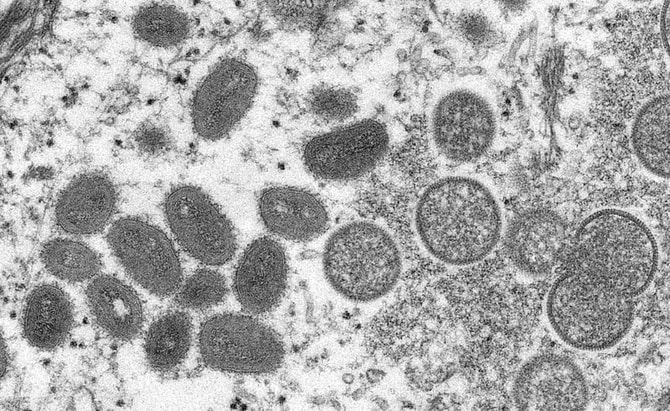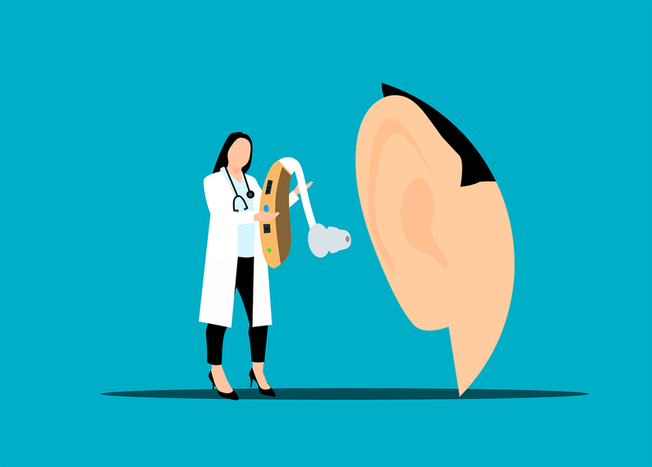Morning Sign Out at UCLA recognizes that in order for the effective dissemination of health information, a conscious effort to be more inclusive in our outreach is needed. We're working on translating article summaries in different languages to increase the accessibility & impact of our articles.
DISCLAIMER: Morning Sign Out at UCLA (MSO) is a student-organized club at the University of California, Los Angeles (UCLA). These summaries are not written by a medical professional.
DISCLAIMER: Morning Sign Out at UCLA (MSO) is a student-organized club at the University of California, Los Angeles (UCLA). These summaries are not written by a medical professional.
Artículos en español | Articles in Spanish
中文 | Articles in Mandarin Chinese
हिन्दी | Articles in Hindi
Are Artificial Sweeteners Beneficial for Diabetics? | September 16, 2023
Artificial sweeteners, like aspartame and saccharin, are sugar substitutes that are much sweeter than regular sugar. For example, aspartame is 200 times sweeter than regular sugar, and saccharine is 300 times sweeter. In addition, most artificial sweeteners have little to no calories. Because of these properties, small amounts of artificial sweeteners are often used to replace regular sugar for diabetics and those trying to lose weight. Many sugary foods such as gum, baked goods, soft drinks, and flavorings can use artificial sugar instead of regular.
Artificial sweeteners interact with the receptor complexes in the intestines, mouth and brain. When the artificial sweetener makes contact with these receptors, it triggers the release of insulin, which prepares the body to intake sugar. However, the way artificial sweetener interacts with the body causes negative effects. Aspartame, for example, increases body weight and mass of fat because it alters the body’s energy efficiency, such as increasing insulin resistance. Aspartame and Saccharin have also shown to have a negative effect on glucose absorption in the intestines. Lastly, artificial sweeteners do not activate FGF21, which is an important hormone that decreases food intake. Therefore, people who consume artificial sweeteners may eat more than they should. Overall, artificial sweeteners may not be the best solution to treat diabetes and weight gain.
Artificial sweeteners, like aspartame and saccharin, are sugar substitutes that are much sweeter than regular sugar. For example, aspartame is 200 times sweeter than regular sugar, and saccharine is 300 times sweeter. In addition, most artificial sweeteners have little to no calories. Because of these properties, small amounts of artificial sweeteners are often used to replace regular sugar for diabetics and those trying to lose weight. Many sugary foods such as gum, baked goods, soft drinks, and flavorings can use artificial sugar instead of regular.
Artificial sweeteners interact with the receptor complexes in the intestines, mouth and brain. When the artificial sweetener makes contact with these receptors, it triggers the release of insulin, which prepares the body to intake sugar. However, the way artificial sweetener interacts with the body causes negative effects. Aspartame, for example, increases body weight and mass of fat because it alters the body’s energy efficiency, such as increasing insulin resistance. Aspartame and Saccharin have also shown to have a negative effect on glucose absorption in the intestines. Lastly, artificial sweeteners do not activate FGF21, which is an important hormone that decreases food intake. Therefore, people who consume artificial sweeteners may eat more than they should. Overall, artificial sweeteners may not be the best solution to treat diabetes and weight gain.
¿Son los edulcorantes artificiales beneficiosas para los diabéticos? | 16 de septiembre 2023
Translated by: Autumn Jackson
Los edulcorantes artificiales, como el aspartamo y la sacarina, son sustitutos del azúcar que son mucho más dulces que el azúcar regular. Por ejemplo, el aspartamo está 200 veces más dulce que el azúcar regular, y la sacarina es 300 veces más dulce. Además, la mayoría de los edulcorantes artificiales no tienen mucha calorías. Porque tienen esta propiedad, las cantidades pequeñas de los edulcorantes artificiales están usados en lugar del azúcar regular para los diabéticos y los que están tratando de bajar de peso. Las comidas azucaradas como la goma de mascar, los productos horneados, los refrescos y las saborizantes pueden usar el azúcar artificial en lugar del azúcar regular.
Los edulcorantes artificiales interactúan con los complejos receptores en los intestinos, la boca y el cerebro. Cuando los edulcorantes artificiales contactan estos receptores, desencadena la liberación de insulina, que prepara al cuerpo para ingerir azúcar. Sin embargo, la manera en que los edulcorantes artificiales interactúan con el cuerpo causa efectos negativos. Por ejemplo, el aspartamo aumentan el peso y masa de grasa porque lo cambian la eficiencia energética del organismo, como la aumentad de la resistencia de la insulina. El aspartamo y la sacarina también han demostrado que tienen un efecto negativo en la absorción de azúcar en los intestinos. En fin, los edulcorantes artificiales no activan FGF21, que es una hormona que baja la ingesta de alimentos. Entonces, es posible que la gente que consume los edulcorantes artificiales comen más que lo normal. En total, es posible que los edulcorantes artificiales no sean la mejor solución para tratar la diabetes y el aumento de peso.
Translated by: Autumn Jackson
Los edulcorantes artificiales, como el aspartamo y la sacarina, son sustitutos del azúcar que son mucho más dulces que el azúcar regular. Por ejemplo, el aspartamo está 200 veces más dulce que el azúcar regular, y la sacarina es 300 veces más dulce. Además, la mayoría de los edulcorantes artificiales no tienen mucha calorías. Porque tienen esta propiedad, las cantidades pequeñas de los edulcorantes artificiales están usados en lugar del azúcar regular para los diabéticos y los que están tratando de bajar de peso. Las comidas azucaradas como la goma de mascar, los productos horneados, los refrescos y las saborizantes pueden usar el azúcar artificial en lugar del azúcar regular.
Los edulcorantes artificiales interactúan con los complejos receptores en los intestinos, la boca y el cerebro. Cuando los edulcorantes artificiales contactan estos receptores, desencadena la liberación de insulina, que prepara al cuerpo para ingerir azúcar. Sin embargo, la manera en que los edulcorantes artificiales interactúan con el cuerpo causa efectos negativos. Por ejemplo, el aspartamo aumentan el peso y masa de grasa porque lo cambian la eficiencia energética del organismo, como la aumentad de la resistencia de la insulina. El aspartamo y la sacarina también han demostrado que tienen un efecto negativo en la absorción de azúcar en los intestinos. En fin, los edulcorantes artificiales no activan FGF21, que es una hormona que baja la ingesta de alimentos. Entonces, es posible que la gente que consume los edulcorantes artificiales comen más que lo normal. En total, es posible que los edulcorantes artificiales no sean la mejor solución para tratar la diabetes y el aumento de peso.
Monkeypox: Understanding the Disease and Tecovirimat as a Treatment | December 28, 2022
Monkeypox is a viral disease that has recently spread in Western countries. The virus is similar to smallpox, in that it causes rashes, coughing, fever, sore throat, and aches. However, unlike smallpox, which can be spread through face to face interaction, clothing, and bedding, monkeypox is mainly spread through sexual intercourse. The most frequent cases of monkeypox are found in male to male sex. In wake of the AIDS epidemic that affected similar target populations, scientists are looking to quickly find suitable treatments. One possible treatment is Tecovirimat, previously approved to treat smallpox in animals. However, because Tecovirimat is not approved for treatment of humans, there must be clinical trials of Tecovirimat before it can be approved by the FDA. Currently, Dr. Raphael Landovitz at the University of California (UCLA) is conducting clinical trials to test Tecovirimat, using male volunteers with monkeypox infections. The study is a random, double-blind placebo experiment, and it is currently in its third phase. In the future, the results of this trial will influence the FDA’s approval of Tecovirimat to treat monkeypox.
Monkeypox is a viral disease that has recently spread in Western countries. The virus is similar to smallpox, in that it causes rashes, coughing, fever, sore throat, and aches. However, unlike smallpox, which can be spread through face to face interaction, clothing, and bedding, monkeypox is mainly spread through sexual intercourse. The most frequent cases of monkeypox are found in male to male sex. In wake of the AIDS epidemic that affected similar target populations, scientists are looking to quickly find suitable treatments. One possible treatment is Tecovirimat, previously approved to treat smallpox in animals. However, because Tecovirimat is not approved for treatment of humans, there must be clinical trials of Tecovirimat before it can be approved by the FDA. Currently, Dr. Raphael Landovitz at the University of California (UCLA) is conducting clinical trials to test Tecovirimat, using male volunteers with monkeypox infections. The study is a random, double-blind placebo experiment, and it is currently in its third phase. In the future, the results of this trial will influence the FDA’s approval of Tecovirimat to treat monkeypox.
La viruela del mono y Tecovirimat como tratamiento potencial | 28 de diciembre 2022
Translated by: Autumn Jackson
La viruela del mono (MPOX) es una enfermedad viral que se ha extendido recientemente en los países occidentales. El virus es similar a la Viruela, porque puede causar las erupciones cutáneas, las toses, la fiebre, el dolor de garganta, y el dolor de la cuerpa. Sin embargo, mientras que la viruela se transmite a tráves de la interacción cara a cara, la ropa, y la ropa de cama, MPOX solo se transmite a tráves de las relaciones sexuales. Las casos de MPOX más frecuente se encuentran en el sexo masculino a masculino. Debido a que la epidemia de SIDA ha afectado a las poblaciones objetivo similares, los científicos están tratando de encontrar rápidamente tratamientos adecuados. Un tratamiento posible es Tecovirimat, que antes fue aprobado para tratar la viruela en los animales. Sin embargo, Tecovirimat no está aprobado para el tratamiento en humanos, así que debe haber ensayos clínicos de Tecovirimat antes de que pueda ser aprobado por la FDA. En el presente, el Dr. Raphael Landovits, de la Universidad de California Los Angeles (UCLA), está llevando a cabo ensayos clínicos para probar Tecovirimat, utilizando voluntarios masculinos con infecciones por MPOX. El estudio es un experimento aleatorio de placebo doble ciego, y actualmente se encuentra en su tercera fase. En el futuro, los resultados de este ensayo van a influir en la aprobación de la FDA de Tecovirimat para tratar MPOX.
Translated by: Autumn Jackson
La viruela del mono (MPOX) es una enfermedad viral que se ha extendido recientemente en los países occidentales. El virus es similar a la Viruela, porque puede causar las erupciones cutáneas, las toses, la fiebre, el dolor de garganta, y el dolor de la cuerpa. Sin embargo, mientras que la viruela se transmite a tráves de la interacción cara a cara, la ropa, y la ropa de cama, MPOX solo se transmite a tráves de las relaciones sexuales. Las casos de MPOX más frecuente se encuentran en el sexo masculino a masculino. Debido a que la epidemia de SIDA ha afectado a las poblaciones objetivo similares, los científicos están tratando de encontrar rápidamente tratamientos adecuados. Un tratamiento posible es Tecovirimat, que antes fue aprobado para tratar la viruela en los animales. Sin embargo, Tecovirimat no está aprobado para el tratamiento en humanos, así que debe haber ensayos clínicos de Tecovirimat antes de que pueda ser aprobado por la FDA. En el presente, el Dr. Raphael Landovits, de la Universidad de California Los Angeles (UCLA), está llevando a cabo ensayos clínicos para probar Tecovirimat, utilizando voluntarios masculinos con infecciones por MPOX. El estudio es un experimento aleatorio de placebo doble ciego, y actualmente se encuentra en su tercera fase. En el futuro, los resultados de este ensayo van a influir en la aprobación de la FDA de Tecovirimat para tratar MPOX.
Hearing Loss and Dementia | September 16, 2023
Dementia—characterized by cognitive decline—is not a normal part of aging, yet affects one in ten Americans aged 65 and older, according to one study. Scientists are exploring the link between hearing loss and cognitive decline, given that 10% of individuals aged 40–69, 30% of those over 65, and 70–90% of those 85 and older experience hearing loss. A study using UK Biobank data involving 226,046 volunteers aged 40-69 found that those with hearing loss had a 28% increased risk of all-cause dementia, and those with hearing loss not using hearing aids faced a 42% higher risk compared to those without hearing loss. The study identified higher dementia risk in women with hearing loss (without hearing aid use) compared to men. It also highlighted factors like reducing social isolation and loneliness in mediating the hearing loss-dementia association. Hearing aid use was associated with a decreased risk of dementia, suggesting its potential as a preventive measure. Further research on hearing aid usage could help reduce stigma, encourage their use, and explore their potential role in preventing dementia.
Dementia—characterized by cognitive decline—is not a normal part of aging, yet affects one in ten Americans aged 65 and older, according to one study. Scientists are exploring the link between hearing loss and cognitive decline, given that 10% of individuals aged 40–69, 30% of those over 65, and 70–90% of those 85 and older experience hearing loss. A study using UK Biobank data involving 226,046 volunteers aged 40-69 found that those with hearing loss had a 28% increased risk of all-cause dementia, and those with hearing loss not using hearing aids faced a 42% higher risk compared to those without hearing loss. The study identified higher dementia risk in women with hearing loss (without hearing aid use) compared to men. It also highlighted factors like reducing social isolation and loneliness in mediating the hearing loss-dementia association. Hearing aid use was associated with a decreased risk of dementia, suggesting its potential as a preventive measure. Further research on hearing aid usage could help reduce stigma, encourage their use, and explore their potential role in preventing dementia.
La pérdida auditiva y la demencia | 16 de septiembre 2023
Translated by: Charissa Mak
La demencia —caracterizada por el deterioro cognitivo— no es una parte normal del envejecimiento, pero afecta a uno de cada diez estadounidenses de 65 años o más, según un estudio. Los científicos están explorando la relación entre la pérdida auditiva y el deterioro cognitivo, dado que el 10% de las personas de 40 a 69 años, el 30% de los mayores de 65 años, y el 70–90% de los mayores de 85 años experimentan pérdida de audición. Un estudio que utilizó datos de UK Biobank en el que participaron 226.046 voluntarios de 40–69 años de edad encontró que las personas con pérdida auditiva tenían un riesgo 28% mayor de demencia por todas las causas, y las personas con pérdida auditiva que no usaban audífonos enfrentaban un riesgo 42% mayor en comparación con las personas sin pérdida auditiva. El estudio identificó un mayor riesgo de demencia en las mujeres con pérdida auditiva (sin uso de audífonos) en comparación con los hombres. También destacó factores como la reducción del aislamiento social y la soledad en la mediación de la asociación entre la pérdida auditiva y la demencia. El uso de audífonos se asoció con un menor riesgo de demencia, lo que sugiere su potencial como medida preventiva. La investigación adicional del uso de audífonos podría ayudar a reducir el estigma, fomentar su uso, y explorar su papel potencial en la prevención de la demencia.
Translated by: Charissa Mak
La demencia —caracterizada por el deterioro cognitivo— no es una parte normal del envejecimiento, pero afecta a uno de cada diez estadounidenses de 65 años o más, según un estudio. Los científicos están explorando la relación entre la pérdida auditiva y el deterioro cognitivo, dado que el 10% de las personas de 40 a 69 años, el 30% de los mayores de 65 años, y el 70–90% de los mayores de 85 años experimentan pérdida de audición. Un estudio que utilizó datos de UK Biobank en el que participaron 226.046 voluntarios de 40–69 años de edad encontró que las personas con pérdida auditiva tenían un riesgo 28% mayor de demencia por todas las causas, y las personas con pérdida auditiva que no usaban audífonos enfrentaban un riesgo 42% mayor en comparación con las personas sin pérdida auditiva. El estudio identificó un mayor riesgo de demencia en las mujeres con pérdida auditiva (sin uso de audífonos) en comparación con los hombres. También destacó factores como la reducción del aislamiento social y la soledad en la mediación de la asociación entre la pérdida auditiva y la demencia. El uso de audífonos se asoció con un menor riesgo de demencia, lo que sugiere su potencial como medida preventiva. La investigación adicional del uso de audífonos podría ayudar a reducir el estigma, fomentar su uso, y explorar su papel potencial en la prevención de la demencia.
Genetics and Adverse Childhood Experiences Shape the Adult Mind | April 25, 2022
Childhood experiences and genetics play pivotal roles in shaping adult behavior and mental health, with about one-third of adult mental illnesses attributed to childhood roots, according to a study. Research emphasizes the especially crucial impact of experiences between ages one to five on later behavioral and emotional issues. Adverse childhood experiences include potentially traumatic events like abuse, parental death, or divorce, leading to long-lasting negative emotional responses and an increased risk of depression and emotional disorders in the future. Genetics contribute significantly to mental health outcomes, with a 20-30% higher likelihood of depression in those with a family history. Maternal depression influences both prenatal development and a child's behavior throughout life. Despite these influences, intervention strategies are available for both children and adults. Cognitive Behavioral Therapy (CBT) is a widely used method where licensed professionals help modify maladaptive behavior, while trauma-focused CBT (TFCBT) specifically helps children who have experienced trauma–targeting issues like aggression, social withdrawal, and communication difficulties. Successful interventions involve a combination of therapy and positive environmental changes, with caregivers educated on proper mental health care for children.
Childhood experiences and genetics play pivotal roles in shaping adult behavior and mental health, with about one-third of adult mental illnesses attributed to childhood roots, according to a study. Research emphasizes the especially crucial impact of experiences between ages one to five on later behavioral and emotional issues. Adverse childhood experiences include potentially traumatic events like abuse, parental death, or divorce, leading to long-lasting negative emotional responses and an increased risk of depression and emotional disorders in the future. Genetics contribute significantly to mental health outcomes, with a 20-30% higher likelihood of depression in those with a family history. Maternal depression influences both prenatal development and a child's behavior throughout life. Despite these influences, intervention strategies are available for both children and adults. Cognitive Behavioral Therapy (CBT) is a widely used method where licensed professionals help modify maladaptive behavior, while trauma-focused CBT (TFCBT) specifically helps children who have experienced trauma–targeting issues like aggression, social withdrawal, and communication difficulties. Successful interventions involve a combination of therapy and positive environmental changes, with caregivers educated on proper mental health care for children.
La genética y las experiencias adversas de la infancia moldean la mente adulta | 25 de abril 2022
Translated by: Charissa Mak
Las experiencias y la genética de la infancia juegan un papel fundamental en la formación del comportamiento y la salud mental de los adultos, y alrededor de un tercio de las enfermedades mentales de los adultos se atribuyen a las raíces de la infancia, según un estudio. La investigación enfatiza el impacto crucial de las experiencias entre las edades de uno a cinco años en los problemas emocionales y de comportamiento posteriores. Las experiencias adversas en la infancia incluyen eventos potencialmente traumáticos como abuso, muerte de los padres, o divorcio, lo que lleva a respuestas emocionales negativas de larga duración y un mayor riesgo de depresión y trastornos emocionales en el futuro. La genética contribuye significativamente a los resultados de salud mental, con un 20-30% más de probabilidad de depresión en las personas con antecedentes familiares. La depresión materna influye tanto en el desarrollo prenatal como en el comportamiento del niño a lo largo de la vida. A pesar de estas influencias, hay muchas estrategias de intervención tanto para niños como para adultos. La terapia cognitiva conductual (TCC) es un método popular utilizado en el que los profesionales autorizados ayudan a modificar el comportamiento maladaptativo, mientras que la terapia cognitiva conductual focalizada en el trauma infantil (TF-CBT) ayuda específicamente a los niños que han experimentado problemas de trauma, como la agresión, el aislamiento social, y dificultades con comunicación. Las intervenciones más exitosas implican una combinación de terapia y cambios ambientales positivos, con cuidadores educados sobre el cuidado adecuado de la salud mental de los niños.
Translated by: Charissa Mak
Las experiencias y la genética de la infancia juegan un papel fundamental en la formación del comportamiento y la salud mental de los adultos, y alrededor de un tercio de las enfermedades mentales de los adultos se atribuyen a las raíces de la infancia, según un estudio. La investigación enfatiza el impacto crucial de las experiencias entre las edades de uno a cinco años en los problemas emocionales y de comportamiento posteriores. Las experiencias adversas en la infancia incluyen eventos potencialmente traumáticos como abuso, muerte de los padres, o divorcio, lo que lleva a respuestas emocionales negativas de larga duración y un mayor riesgo de depresión y trastornos emocionales en el futuro. La genética contribuye significativamente a los resultados de salud mental, con un 20-30% más de probabilidad de depresión en las personas con antecedentes familiares. La depresión materna influye tanto en el desarrollo prenatal como en el comportamiento del niño a lo largo de la vida. A pesar de estas influencias, hay muchas estrategias de intervención tanto para niños como para adultos. La terapia cognitiva conductual (TCC) es un método popular utilizado en el que los profesionales autorizados ayudan a modificar el comportamiento maladaptativo, mientras que la terapia cognitiva conductual focalizada en el trauma infantil (TF-CBT) ayuda específicamente a los niños que han experimentado problemas de trauma, como la agresión, el aislamiento social, y dificultades con comunicación. Las intervenciones más exitosas implican una combinación de terapia y cambios ambientales positivos, con cuidadores educados sobre el cuidado adecuado de la salud mental de los niños.
The Benefits and Risks of Caffeine | December 29, 2023
Caffeine is one of the most widely consumed and studied compounds in the world, largely due to its properties as a stimulant and seemingly few adverse side effects. As a result, considerable scientific investigation has been done in order to find the potential health benefits of the substance. Research shows that caffeine stimulates the central nervous system (CNS), leading to an increase in heart rate, blood pressure, and metabolism. Current studies are attempting to explore its potential in inhibiting tumor growth by targeting certain cancer cell characteristics, such as resistance to cell death (apoptosis) and aging (cellular senescence). Furthermore, caffeine has been shown to benefit the immune system and exhibits anti-inflammatory effects, leading to its potential impact on conditions such as multiple sclerosis and rheumatoid arthritis. Athletes also commonly use caffeine in order to enhance performance and recovery, with research showing improvements in attention, alertness, mood, and muscle function. However, it is important to moderate the use of caffeine, as excessive consumption may increase the risk of cardiovascular disease. Hence, in order to harness its true medical potential, finding this proper balance is necessary.
Caffeine is one of the most widely consumed and studied compounds in the world, largely due to its properties as a stimulant and seemingly few adverse side effects. As a result, considerable scientific investigation has been done in order to find the potential health benefits of the substance. Research shows that caffeine stimulates the central nervous system (CNS), leading to an increase in heart rate, blood pressure, and metabolism. Current studies are attempting to explore its potential in inhibiting tumor growth by targeting certain cancer cell characteristics, such as resistance to cell death (apoptosis) and aging (cellular senescence). Furthermore, caffeine has been shown to benefit the immune system and exhibits anti-inflammatory effects, leading to its potential impact on conditions such as multiple sclerosis and rheumatoid arthritis. Athletes also commonly use caffeine in order to enhance performance and recovery, with research showing improvements in attention, alertness, mood, and muscle function. However, it is important to moderate the use of caffeine, as excessive consumption may increase the risk of cardiovascular disease. Hence, in order to harness its true medical potential, finding this proper balance is necessary.
कैफीन के फायदे और जोखिम
Translated by: Aryaman Singh
कैफीन दुनिया में सबसे अधिक पिया जाने वाला और अध्ययन किया जाने वाला यौगिक है क्योंकि इसमें कई उत्तेजक गुण हैं और इसके कुछ बुरे दुष्प्रभाव भी हैं।इस वजह से, इसके संभावित स्वास्थ्य लाभों को खोजने के लिए बहुत सारे शोध किए गए हैं।शोध से पता चलता है कि कैफीन केंद्रीय तंत्रिका तंत्र (सीएनएस) को उत्तेजित करता है, जिससे हृदय गति, रक्तचाप और उपापचय में वृद्धि होती है।वर्तमान अध्ययन कुछ कैंसर कोशिका विशेषताओं, जैसे कोशिका मृत्यु (एपोप्टोसिस) और उम्र बढ़ने (सेलुलर बुढ़ापा) के प्रतिरोध पर ध्यान केंद्रित करके ट्यूमर के विकास को रोकने में इसकी क्षमता का पता लगाने की कोशिश कर रहे हैं।इसके अलावा, कैफीन प्रतिरक्षा प्रणाली में मदद करता है और सूजन-रोधी प्रभाव दिखाता है, जिसका अर्थ है कि यह मल्टीपल स्केलेरोसिस और रुमेटीइड गठिया जैसी स्थितियों को प्रभावित कर सकता है।एथलीट प्रदर्शन और रिकवरी में मदद के लिए भी कैफीन का उपयोग करते हैं, शोध से ध्यान, सतर्कता, मनोदशा और मांसपेशियों की कार्यप्रणाली में सुधार देखा गया है।हालाँकि, कैफीन के उपयोग को कम करना महत्वपूर्ण है, क्योंकि बहुत अधिक मात्रा में हृदय रोग का खतरा बढ़ सकता है। इसलिए, इसकी वास्तविक चिकित्सा क्षमता का उपयोग करने के लिए, उचित संतुलन खोजना आवश्यक है।
Translated by: Aryaman Singh
कैफीन दुनिया में सबसे अधिक पिया जाने वाला और अध्ययन किया जाने वाला यौगिक है क्योंकि इसमें कई उत्तेजक गुण हैं और इसके कुछ बुरे दुष्प्रभाव भी हैं।इस वजह से, इसके संभावित स्वास्थ्य लाभों को खोजने के लिए बहुत सारे शोध किए गए हैं।शोध से पता चलता है कि कैफीन केंद्रीय तंत्रिका तंत्र (सीएनएस) को उत्तेजित करता है, जिससे हृदय गति, रक्तचाप और उपापचय में वृद्धि होती है।वर्तमान अध्ययन कुछ कैंसर कोशिका विशेषताओं, जैसे कोशिका मृत्यु (एपोप्टोसिस) और उम्र बढ़ने (सेलुलर बुढ़ापा) के प्रतिरोध पर ध्यान केंद्रित करके ट्यूमर के विकास को रोकने में इसकी क्षमता का पता लगाने की कोशिश कर रहे हैं।इसके अलावा, कैफीन प्रतिरक्षा प्रणाली में मदद करता है और सूजन-रोधी प्रभाव दिखाता है, जिसका अर्थ है कि यह मल्टीपल स्केलेरोसिस और रुमेटीइड गठिया जैसी स्थितियों को प्रभावित कर सकता है।एथलीट प्रदर्शन और रिकवरी में मदद के लिए भी कैफीन का उपयोग करते हैं, शोध से ध्यान, सतर्कता, मनोदशा और मांसपेशियों की कार्यप्रणाली में सुधार देखा गया है।हालाँकि, कैफीन के उपयोग को कम करना महत्वपूर्ण है, क्योंकि बहुत अधिक मात्रा में हृदय रोग का खतरा बढ़ सकता है। इसलिए, इसकी वास्तविक चिकित्सा क्षमता का उपयोग करने के लिए, उचित संतुलन खोजना आवश्यक है।
You Are Where You Eat: How Fast Food Affects Diabetes Risk | September 26, 2022
Diabetes is an incurable disease that affects the body’s ability to control the amount of glucose, or sugar, in the bloodstream. Specifically, type 2 diabetes occurs when the body is no longer able to use insulin to lower blood sugar, leading to harmful complications such as liver damage, kidney disease, and even vision loss. Luckily, type 2 diabetes is preventable and heavily depends on factors such as what people eat. One study from 2022 found that the number of fast food restaurants in an area was positively associated with the development of type 2 diabetes. In other words, people who live in areas with more fast food restaurants are more likely to develop the disease than people who live in areas with less fast food. This could be because fast food is convenient for people with busy schedules, but it is packed with unhealthy fats, preservatives, and most importantly, sugar. Frequently eating fast food can increase the risk for having diabetes later on, so it helps to be conscious of local food options and seek out nutritious food—such as fresh fruits and vegetables—when possible. It is important to remember type 2 diabetes is preventable by maintaining a healthy weight, exercising regularly, and eating a balanced diet.
Diabetes is an incurable disease that affects the body’s ability to control the amount of glucose, or sugar, in the bloodstream. Specifically, type 2 diabetes occurs when the body is no longer able to use insulin to lower blood sugar, leading to harmful complications such as liver damage, kidney disease, and even vision loss. Luckily, type 2 diabetes is preventable and heavily depends on factors such as what people eat. One study from 2022 found that the number of fast food restaurants in an area was positively associated with the development of type 2 diabetes. In other words, people who live in areas with more fast food restaurants are more likely to develop the disease than people who live in areas with less fast food. This could be because fast food is convenient for people with busy schedules, but it is packed with unhealthy fats, preservatives, and most importantly, sugar. Frequently eating fast food can increase the risk for having diabetes later on, so it helps to be conscious of local food options and seek out nutritious food—such as fresh fruits and vegetables—when possible. It is important to remember type 2 diabetes is preventable by maintaining a healthy weight, exercising regularly, and eating a balanced diet.
Eres lo que comes: Cómo la comida rápida afecta el riesgo de diabetes | 26 de septiembre 2022
Translated by: Audrey Banzali-Marks
La diabetes es una enfermedad incurable que afecta la habilidad del cuerpo a controlar la cantidad de glucosa, o azúcar, en el torrente sanguíneo. Específicamente, la diabetes tipo 2 ocurre cuando el cuerpo ya no puede usar la insulina para bajar el azúcar en la sangre, que lleva a complicaciones perjudiciales como daño al hígado, la enfermedad renal y aún pérdida de visión. Afortunadamente, la diabetes tipo 2 es evitable y depende mucho en factores como lo que se come. Un estudio de 2022 descubrió que el número de restaurantes de comida rápida en un área fue asociado positivamente con el desarrollo de la diabetes tipo 2. En otras palabras, gente quien vive en áreas con más restaurantes de comida rápida corre mayor riesgo de desarrollar la enfermedad que gente en áreas con menos comida rápida. Esto puede ser porque la comida rápida es conveniente para personas con agendas muy ocupadas, pero está llena de grasas insalubres, conservantes y lo más importante, azúcar. Comer comida rápida con frecuencia puede aumentar el riesgo de tener diabetes más adelante; por eso, se ayuda tener conciencia de opciones locales de comida y elegir comida saludable —como frutas y verduras frescas— cuando posible. Es importante recordar que la diabetes tipo 2 es prevenible a traves de mantener un peso saludable, hacer ejercicio regularmente y comer una dieta equilibrada.
Translated by: Audrey Banzali-Marks
La diabetes es una enfermedad incurable que afecta la habilidad del cuerpo a controlar la cantidad de glucosa, o azúcar, en el torrente sanguíneo. Específicamente, la diabetes tipo 2 ocurre cuando el cuerpo ya no puede usar la insulina para bajar el azúcar en la sangre, que lleva a complicaciones perjudiciales como daño al hígado, la enfermedad renal y aún pérdida de visión. Afortunadamente, la diabetes tipo 2 es evitable y depende mucho en factores como lo que se come. Un estudio de 2022 descubrió que el número de restaurantes de comida rápida en un área fue asociado positivamente con el desarrollo de la diabetes tipo 2. En otras palabras, gente quien vive en áreas con más restaurantes de comida rápida corre mayor riesgo de desarrollar la enfermedad que gente en áreas con menos comida rápida. Esto puede ser porque la comida rápida es conveniente para personas con agendas muy ocupadas, pero está llena de grasas insalubres, conservantes y lo más importante, azúcar. Comer comida rápida con frecuencia puede aumentar el riesgo de tener diabetes más adelante; por eso, se ayuda tener conciencia de opciones locales de comida y elegir comida saludable —como frutas y verduras frescas— cuando posible. Es importante recordar que la diabetes tipo 2 es prevenible a traves de mantener un peso saludable, hacer ejercicio regularmente y comer una dieta equilibrada.
Sunscreen and Potential Effects on Marine Environments | September 26, 2022
Applying sunscreen is a crucial preventative measure to protect the skin against sun damage. This blocks harmful ultraviolet (UV) rays in sunlight, which causes sunburn in the short-term but can lead to premature aging and skin cancer in the long run. According to one study, sunscreen reapplication every two hours is necessary to maintain consistent protection throughout the day. Active ingredients known as UV filters are the compounds in sunscreen that protect us from UV rays. There are between 3–8 types of UV filters in any given sunscreen. It is important to check which filters they are, however, because some can pollute marine ecosystems. This happens because when people wear sunscreen to the beach and play in the ocean, the chemicals in their sunscreen wash off into the water and harm the animals and plants that live there. To protect skin from the sun and marine life from destruction, make sure to avoid sunscreen containing the UV filters oxybenzone and avobenzone, as well as others that can be found on this list.
Applying sunscreen is a crucial preventative measure to protect the skin against sun damage. This blocks harmful ultraviolet (UV) rays in sunlight, which causes sunburn in the short-term but can lead to premature aging and skin cancer in the long run. According to one study, sunscreen reapplication every two hours is necessary to maintain consistent protection throughout the day. Active ingredients known as UV filters are the compounds in sunscreen that protect us from UV rays. There are between 3–8 types of UV filters in any given sunscreen. It is important to check which filters they are, however, because some can pollute marine ecosystems. This happens because when people wear sunscreen to the beach and play in the ocean, the chemicals in their sunscreen wash off into the water and harm the animals and plants that live there. To protect skin from the sun and marine life from destruction, make sure to avoid sunscreen containing the UV filters oxybenzone and avobenzone, as well as others that can be found on this list.
El protector solar y sus efectos potenciales en ambientes marinos | 26 de septiembre 2022
Translated by: Audrey Banzali-Marks
La aplicación del protector solar es una medida preventiva crucial para proteger la piel contra daño del sol. Bloquea rayos ultravioleta (UV) dañosos en la luz del sol, que causa quemaduras solares a corto plazo pero lleva al envejecimiento prematuro y cáncer de la piel más adelante. Según de un estudio, la aplicación del protector solar de nuevo cada dos horas es necesario para mantener protección constante a través del día. Ingredientes activos que se llaman filtros UV son los compuestos en el protector solar que nos protegen de los rayos UV. Hay 3–8 tipos de filtros UV en cualquier uno protector solar. Sin embargo, es importante que chequee cuales filtros son porque algunos contaminan ambientes marinos. Esto occure porque cuando gente usa el protector solar a la playa y jugar en el oceáno, las químicas en el protector solar se quitan en el agua y dañan a los animales y las plantas que viven allí. Para proteger la piel contra los efectos del sol mientras proteger la vida marina, debe evitar el protector solar que contiene los filtros UV oxibenzona y avobenzona además de otros que se puede encontrar en esta lista.
Translated by: Audrey Banzali-Marks
La aplicación del protector solar es una medida preventiva crucial para proteger la piel contra daño del sol. Bloquea rayos ultravioleta (UV) dañosos en la luz del sol, que causa quemaduras solares a corto plazo pero lleva al envejecimiento prematuro y cáncer de la piel más adelante. Según de un estudio, la aplicación del protector solar de nuevo cada dos horas es necesario para mantener protección constante a través del día. Ingredientes activos que se llaman filtros UV son los compuestos en el protector solar que nos protegen de los rayos UV. Hay 3–8 tipos de filtros UV en cualquier uno protector solar. Sin embargo, es importante que chequee cuales filtros son porque algunos contaminan ambientes marinos. Esto occure porque cuando gente usa el protector solar a la playa y jugar en el oceáno, las químicas en el protector solar se quitan en el agua y dañan a los animales y las plantas que viven allí. Para proteger la piel contra los efectos del sol mientras proteger la vida marina, debe evitar el protector solar que contiene los filtros UV oxibenzona y avobenzona además de otros que se puede encontrar en esta lista.
The Effects of Gardening and Its Positive Health Outcomes | July 16, 2019
For many, gardening is seen as a simple hobby. However, recent studies have shown gardening’s impact as it is positively correlated with improved health. On the individual level, gardening improves health because people are more likely to eat fruits and vegetables if they are the ones to plant them. As such, there is a higher intake of natural foods rather than processed ones, which increases the overall health of the individual. In one study, the level of health was measured using the Body Mass Index (BMI), which is an indicator of a person’s body fat. Furthermore, gardening has a positive impact in communities with a concentrated amount of low-income households. In these communities, it is hard to access sources of healthy foods, such as the grocery store and farmer’s market, but community gardens have alleviated this issue. When supported by local governments, community gardens provide fresh fruits and vegetables to the community at a lower cost. As such, it is highly encouraged that individuals begin gardening in their free time or contributing to community gardens in order to increase their personal health.
For many, gardening is seen as a simple hobby. However, recent studies have shown gardening’s impact as it is positively correlated with improved health. On the individual level, gardening improves health because people are more likely to eat fruits and vegetables if they are the ones to plant them. As such, there is a higher intake of natural foods rather than processed ones, which increases the overall health of the individual. In one study, the level of health was measured using the Body Mass Index (BMI), which is an indicator of a person’s body fat. Furthermore, gardening has a positive impact in communities with a concentrated amount of low-income households. In these communities, it is hard to access sources of healthy foods, such as the grocery store and farmer’s market, but community gardens have alleviated this issue. When supported by local governments, community gardens provide fresh fruits and vegetables to the community at a lower cost. As such, it is highly encouraged that individuals begin gardening in their free time or contributing to community gardens in order to increase their personal health.
園藝的好處
Translated by: Angelina Yuan
对很多人来说,园艺只是一个小爱好,但最近的研究发现园艺有许多好处。首先,园艺会使人身体更健康。在个人层面,园艺使人健康是因为人们更倾向于吃他们自己种植的水果和蔬菜。当人们多吃自然食品,而少吃加工食品的时候,身体就会变得更健康。个人的身体健康使用体重指数测量,体重指数可以表示个人的身体脂肪多少。还有,园艺对低收入社区也有好处。 这些社区杂货店很少,人们不容易买到健康食物,而社区花园可以帮助解决这个问题。如果有当地政府支持社区花园会对社区特别好,这是因为花园能够提供便宜的新鲜食物。因此,每个人都应该开始建设自己的花园或者帮助社区花园,这有助于人们的身体健康。
Translated by: Angelina Yuan
对很多人来说,园艺只是一个小爱好,但最近的研究发现园艺有许多好处。首先,园艺会使人身体更健康。在个人层面,园艺使人健康是因为人们更倾向于吃他们自己种植的水果和蔬菜。当人们多吃自然食品,而少吃加工食品的时候,身体就会变得更健康。个人的身体健康使用体重指数测量,体重指数可以表示个人的身体脂肪多少。还有,园艺对低收入社区也有好处。 这些社区杂货店很少,人们不容易买到健康食物,而社区花园可以帮助解决这个问题。如果有当地政府支持社区花园会对社区特别好,这是因为花园能够提供便宜的新鲜食物。因此,每个人都应该开始建设自己的花园或者帮助社区花园,这有助于人们的身体健康。
The Importance of Sleep Quality On Preventing Heart Disease | January 6, 2021
A recent study has found a relationship between atherosclerosis and sleep fragmentation. Atherosclerosis is the hardening of blood vessels, which may eventually lead to other cardiovascular issues. The relationship between this and sleep fragmentation is due to the effect of sleep fragmentation on white blood cells in the body. An increased number of white blood cells, which is usually indicative of an infection, is also exhibited upon poor sleeping. An increased number of white blood cells, due to the body’s immune system trying to fight an infection or due to sleep fragmentation, lead to an increased risk of atherosclerosis. As such, sleep quality is important for reducing the risk of cardiovascular disease.
A recent study has found a relationship between atherosclerosis and sleep fragmentation. Atherosclerosis is the hardening of blood vessels, which may eventually lead to other cardiovascular issues. The relationship between this and sleep fragmentation is due to the effect of sleep fragmentation on white blood cells in the body. An increased number of white blood cells, which is usually indicative of an infection, is also exhibited upon poor sleeping. An increased number of white blood cells, due to the body’s immune system trying to fight an infection or due to sleep fragmentation, lead to an increased risk of atherosclerosis. As such, sleep quality is important for reducing the risk of cardiovascular disease.
睡眠质量对于预防心脏病的重要性
Translated by: Annie Liang
最近的一项研究发现了动脉粥样硬化和破碎性睡眠之间的关系。 动脉粥样硬化是血管硬化,最终可能导致其他心血管问题。 其与破碎性睡眠之间的关系是由于破碎性睡眠对体内白细胞的影响。 白细胞数量增加,通常表示有感染存在,也会表现出睡眠不佳。 由于身体的免疫系统试图抵抗感染或由于破碎性睡眠,白细胞数量增加会导致动脉粥样硬化的风险增加。 因此,睡眠质量对于降低心血管疾病的风险很重要。
Translated by: Annie Liang
最近的一项研究发现了动脉粥样硬化和破碎性睡眠之间的关系。 动脉粥样硬化是血管硬化,最终可能导致其他心血管问题。 其与破碎性睡眠之间的关系是由于破碎性睡眠对体内白细胞的影响。 白细胞数量增加,通常表示有感染存在,也会表现出睡眠不佳。 由于身体的免疫系统试图抵抗感染或由于破碎性睡眠,白细胞数量增加会导致动脉粥样硬化的风险增加。 因此,睡眠质量对于降低心血管疾病的风险很重要。
Smokers are More Likely to Have Severe Cases of Covid-19 | January 18 2022
An early study incorrectly linked smoking to having greater protection against COVID-19. Because there were flaws with that early study, a new study was conducted and it showed that smoking only worsens the effects of the virus. The study found that smokers who got COVID-19 were 80% more likely to be admitted to the hospital or die than nonsmokers. People who tend to smoke are twice as likely to get infected, five times more likely to get hospitalized, and ten times more likely to die from COVID-19. Thus, habitual smoking has been shown to lower chances of recovery and increase symptoms after infection.
An early study incorrectly linked smoking to having greater protection against COVID-19. Because there were flaws with that early study, a new study was conducted and it showed that smoking only worsens the effects of the virus. The study found that smokers who got COVID-19 were 80% more likely to be admitted to the hospital or die than nonsmokers. People who tend to smoke are twice as likely to get infected, five times more likely to get hospitalized, and ten times more likely to die from COVID-19. Thus, habitual smoking has been shown to lower chances of recovery and increase symptoms after infection.
吸烟者更有可能患上严重的 COVID-19 病例
Translated by: Annie Liang
一项早期研究错误地将吸烟与对 COVID-19 有更大防护联系起来。由于该早期研究存在缺陷,因此进行了一项新研究,结果表明吸烟只会加剧病毒的影响。研究发现,感染COVID-19 的吸烟者入院或死亡的可能性比不吸烟者高 80%。倾向于吸烟的人被感染的可能性是不吸烟者的两倍,住院的可能性是其五倍,死于 COVID-19 的可能性是其十倍。因此,习惯性吸烟已被证明会降低康复的机会并增加感染后的症状。
Translated by: Annie Liang
一项早期研究错误地将吸烟与对 COVID-19 有更大防护联系起来。由于该早期研究存在缺陷,因此进行了一项新研究,结果表明吸烟只会加剧病毒的影响。研究发现,感染COVID-19 的吸烟者入院或死亡的可能性比不吸烟者高 80%。倾向于吸烟的人被感染的可能性是不吸烟者的两倍,住院的可能性是其五倍,死于 COVID-19 的可能性是其十倍。因此,习惯性吸烟已被证明会降低康复的机会并增加感染后的症状。
Benefits of Yoga for Youth with Depression and Anxiety | April 1, 2021
Yoga is a form of exercise that emphasizes physical health and flexibility, and it has the potential to promote well-being. As more children develop depression and anxiety, yoga could be helpful. In a 2020 review, 70% of studies showed that people younger than 18 years old had improvements in symptoms of anxiety and/or depression after practicing yoga. In other words, yoga appears to help decrease anxiety and depression. In addition to its positive effects on mental health, yoga can also help improve physical health. Potential benefits include improved digestion, reduced blood pressure, better posture, strength, and flexibility. Yoga is easy to start because there are many online classes and videos to follow along with, and it does not require much space. Overall, yoga is an accessible form of exercise that could improve both physical and mental health.
Yoga is a form of exercise that emphasizes physical health and flexibility, and it has the potential to promote well-being. As more children develop depression and anxiety, yoga could be helpful. In a 2020 review, 70% of studies showed that people younger than 18 years old had improvements in symptoms of anxiety and/or depression after practicing yoga. In other words, yoga appears to help decrease anxiety and depression. In addition to its positive effects on mental health, yoga can also help improve physical health. Potential benefits include improved digestion, reduced blood pressure, better posture, strength, and flexibility. Yoga is easy to start because there are many online classes and videos to follow along with, and it does not require much space. Overall, yoga is an accessible form of exercise that could improve both physical and mental health.
Beneficios del yoga para los jóvenes con depresión y ansiedad | 1 de abril 2021
Translated by: Jenna Hartstein
El yoga es una forma de ejercicio que enfatiza la salud física y la flexibilidad, y tiene el potencial de promover el bienestar. A medida que más niños desarrollen la depresión y la ansiedad, el yoga podría ser útil. En una revisión de 2020, el 70% de los estudios revelaron que las personas menores de 18 años de edad tenían mejoras en los síntomas de ansiedad o depresión después de practicar yoga. En otras palabras, el yoga parece ayudar a disminuir la ansiedad y la depresión. Además de sus efectos positivos en la salud mental, el yoga también puede ayudar a mejorar la salud física. Los beneficios potenciales incluyen mejor digestión, presión arterial reducida, mejor postura, fuerza y flexibilidad. El yoga es fácil de empezar porque hay muchas clases en línea y videos para seguir, y no requiere mucho espacio. En conclusión, yoga es una forma accesible del ejercicio que podría mejorar ambos la salud física y mental.
Translated by: Jenna Hartstein
El yoga es una forma de ejercicio que enfatiza la salud física y la flexibilidad, y tiene el potencial de promover el bienestar. A medida que más niños desarrollen la depresión y la ansiedad, el yoga podría ser útil. En una revisión de 2020, el 70% de los estudios revelaron que las personas menores de 18 años de edad tenían mejoras en los síntomas de ansiedad o depresión después de practicar yoga. En otras palabras, el yoga parece ayudar a disminuir la ansiedad y la depresión. Además de sus efectos positivos en la salud mental, el yoga también puede ayudar a mejorar la salud física. Los beneficios potenciales incluyen mejor digestión, presión arterial reducida, mejor postura, fuerza y flexibilidad. El yoga es fácil de empezar porque hay muchas clases en línea y videos para seguir, y no requiere mucho espacio. En conclusión, yoga es una forma accesible del ejercicio que podría mejorar ambos la salud física y mental.
Exploring the Relation Between Vegetarianism and Mental Health | July 23, 2021
Plant-based diets are increasing in popularity for environmental and moral reasons. With this increase in popularity, scientists are investigating the role that plant-based diets, vegetarianism specifically, have on anxiety and depression. One report that examined 14 studies determined that seven of these studies found significantly higher rates of mental illnesses among vegetarians. Furthermore, a large-scale German study found a correlation between meatless diets and mental illness where rates of anxiety were almost two times higher in vegetarians when compared to non-vegetarians. Various other studies found increased rates of depression and suicide attempts in vegetarians. These correlations between increased mental illness and meatless diets may be because there is a nutritional component to mental illness. If vegetarians do not consume a well-rounded diet, they may become deficient in vitamin B(12), vitamin D, and iron, which could lead to a worsened mental state. This is why it is very important for people on plant-based diets to consume an adequate amount of nutrients and protein. While these findings are not enough to conclude that not consuming meat leads to declining mental health, knowing this information can help people make more informed choices about their eating habits as the research continues.
Plant-based diets are increasing in popularity for environmental and moral reasons. With this increase in popularity, scientists are investigating the role that plant-based diets, vegetarianism specifically, have on anxiety and depression. One report that examined 14 studies determined that seven of these studies found significantly higher rates of mental illnesses among vegetarians. Furthermore, a large-scale German study found a correlation between meatless diets and mental illness where rates of anxiety were almost two times higher in vegetarians when compared to non-vegetarians. Various other studies found increased rates of depression and suicide attempts in vegetarians. These correlations between increased mental illness and meatless diets may be because there is a nutritional component to mental illness. If vegetarians do not consume a well-rounded diet, they may become deficient in vitamin B(12), vitamin D, and iron, which could lead to a worsened mental state. This is why it is very important for people on plant-based diets to consume an adequate amount of nutrients and protein. While these findings are not enough to conclude that not consuming meat leads to declining mental health, knowing this information can help people make more informed choices about their eating habits as the research continues.
Explorando la relación entre el vegetarianismo y la salud mental | 23 de julio 2021
Translated by: Jenna Hartstein
Las dietas basadas en plantas están aumentando en popularidad por razones medioambientales y morales. Con este aumento en popularidad, los científicos están investigando el papel que las dietas basadas en plantas, específicamente el vegetarianismo, tienen en la ansiedad y la depresión. Un informe que examinó 14 estudios reveló que siete de estos estudios encontraron tasas significativamente más altas de enfermedades mentales en los vegetarianos. Además, un estudio alemán a gran escala encontró una correlación entre dietas sin carne y enfermedades mentales, donde las tasas de ansiedad fueron casi dos veces más altas en los vegetarianos en comparación con las personas que no son vegetarianas. Varios otros estudios encontraron un aumento de las tasas de depresión e intentos de suicidios en vegetarianos. Estas correlaciones entre el aumento de las enfermedades mentales y las dietas sin carne pueden deberse a que hay un componente nutricional en la enfermedad mental. Si los vegetarianos no comen una dieta buena y equilibrada, pueden llegar a ser deficientes en vitamina B(12), vitamina D e hierro, lo que podría conducir a un peor estado mental. Por eso es muy importante que las personas que comen una dieta basada en plantas consuman una cantidad adecuada de nutrientes y proteínas. Si bien estos resultados no son suficientes para concluir que no consumir carne resulta en una disminución de salud mental, conocer esta información puede ayudar a las personas a tomar decisiones más informadas sobre sus hábitos alimenticios a medida que los científicos continúan la investigación.
Translated by: Jenna Hartstein
Las dietas basadas en plantas están aumentando en popularidad por razones medioambientales y morales. Con este aumento en popularidad, los científicos están investigando el papel que las dietas basadas en plantas, específicamente el vegetarianismo, tienen en la ansiedad y la depresión. Un informe que examinó 14 estudios reveló que siete de estos estudios encontraron tasas significativamente más altas de enfermedades mentales en los vegetarianos. Además, un estudio alemán a gran escala encontró una correlación entre dietas sin carne y enfermedades mentales, donde las tasas de ansiedad fueron casi dos veces más altas en los vegetarianos en comparación con las personas que no son vegetarianas. Varios otros estudios encontraron un aumento de las tasas de depresión e intentos de suicidios en vegetarianos. Estas correlaciones entre el aumento de las enfermedades mentales y las dietas sin carne pueden deberse a que hay un componente nutricional en la enfermedad mental. Si los vegetarianos no comen una dieta buena y equilibrada, pueden llegar a ser deficientes en vitamina B(12), vitamina D e hierro, lo que podría conducir a un peor estado mental. Por eso es muy importante que las personas que comen una dieta basada en plantas consuman una cantidad adecuada de nutrientes y proteínas. Si bien estos resultados no son suficientes para concluir que no consumir carne resulta en una disminución de salud mental, conocer esta información puede ayudar a las personas a tomar decisiones más informadas sobre sus hábitos alimenticios a medida que los científicos continúan la investigación.
Can Physical Exercise Combat Alzheimer's Disease? | July 23, 2021
Scientists are looking for ways to combat Alzheimer's disease, because there will be an increase in older citizens in the near future, as a large portion of the population is growing older. Alzheimer’s disease causes beta-amyloid and tau proteins to build up in the brain of older individuals, which then causes mental function and memory to decline. One possible treatment to help Alzheimers is consistent exercise. In studies of exercise in elderly patients, researchers found that exercise can fight mental decline, possibly because increased blood flow reduces the accumulation of the beta-amyloid and tau proteins. In total, 24 studies of weight training in elderly people showed an overall positive effect of exercise on mental function, and another 16 studies showed that 45% of tested people who exercised were less likely to develop Alzheimer’s disease. Overall, even though this topic needs to be researched more, these possible benefits make exercise an even stronger recommendation for people of all ages.
Scientists are looking for ways to combat Alzheimer's disease, because there will be an increase in older citizens in the near future, as a large portion of the population is growing older. Alzheimer’s disease causes beta-amyloid and tau proteins to build up in the brain of older individuals, which then causes mental function and memory to decline. One possible treatment to help Alzheimers is consistent exercise. In studies of exercise in elderly patients, researchers found that exercise can fight mental decline, possibly because increased blood flow reduces the accumulation of the beta-amyloid and tau proteins. In total, 24 studies of weight training in elderly people showed an overall positive effect of exercise on mental function, and another 16 studies showed that 45% of tested people who exercised were less likely to develop Alzheimer’s disease. Overall, even though this topic needs to be researched more, these possible benefits make exercise an even stronger recommendation for people of all ages.
¿Puede el ejercicio combatir la enfermedad de alzhéimer? | 23 de julio 2021
Translated by: Autumn Jackson
Los científicos están buscando por más soluciones para combatir la enfermedad de Alzheimer, porque habrá un aumento de los ancianos en el futuro próximo ya que gran parte de la población está envejeciendo. El Alzhéimer causa proteínas beta-amiloide y tau a acumular en el cerebro de los viejos, que entonces causa la función mental y la memoría a declinar. Una solución posible a ayudar a las personas con Alzhéimer es el ejercicio constante. En las investigaciones de los pacientes viejos, los investigadores encontraron que el ejercicio puede combatir el deterioro mental. Una posibilidad es que el ejercicio causa un aumento del flujo sanguíneo que disminuye la acumulación de las proteínas beta-amiloide y tau. En total, 24 investigaciones en las que los ancianos levantaron pesas demostraron un efecto positivo del ejercicio en la función mental. También había 16 más investigaciones en que 45% de personas evaluadas que hicieron ejercicio tuvieron menos riesgo de desarrollar el Alzhéimer. En resumen, aunque este tópico necesita más investigación, los beneficios posibles de ejercicio aumentan la importancia de esta recomendación para gente de todas edades.
Translated by: Autumn Jackson
Los científicos están buscando por más soluciones para combatir la enfermedad de Alzheimer, porque habrá un aumento de los ancianos en el futuro próximo ya que gran parte de la población está envejeciendo. El Alzhéimer causa proteínas beta-amiloide y tau a acumular en el cerebro de los viejos, que entonces causa la función mental y la memoría a declinar. Una solución posible a ayudar a las personas con Alzhéimer es el ejercicio constante. En las investigaciones de los pacientes viejos, los investigadores encontraron que el ejercicio puede combatir el deterioro mental. Una posibilidad es que el ejercicio causa un aumento del flujo sanguíneo que disminuye la acumulación de las proteínas beta-amiloide y tau. En total, 24 investigaciones en las que los ancianos levantaron pesas demostraron un efecto positivo del ejercicio en la función mental. También había 16 más investigaciones en que 45% de personas evaluadas que hicieron ejercicio tuvieron menos riesgo de desarrollar el Alzhéimer. En resumen, aunque este tópico necesita más investigación, los beneficios posibles de ejercicio aumentan la importancia de esta recomendación para gente de todas edades.
The Intersection of Insomnia and Depression | January 18, 2022
Insomnia, the difficulty to fall asleep or stay asleep, can be caused by factors like stress, physical pain, or even mental illness. Notably, depression is often linked to insomnia. Major depressive disorder, the most common form of depression, can cause difficulty sleeping in addition to its other symptoms. At the same time, although depression can lead to insomnia, a recent literature review suggests that insomnia can also lead to depression. For example, lack of quality sleep can cause people to be in a poor mood in the long run. Additionally, there are some similarities in genes and brain abnormalities of people with insomnia and people with depression, making it easier for the two conditions to overlap. With this connection in mind, it is important to address insomnia when treating people with both conditions. There are several methods to treat insomnia, such as cognitive behavioral therapy, and it’s easier to treat than depression in some cases. After treating insomnia, many individuals experience improvements in their mental health and a decrease in depression. Overall, helping patients get quality sleep can improve their quality of life.
Insomnia, the difficulty to fall asleep or stay asleep, can be caused by factors like stress, physical pain, or even mental illness. Notably, depression is often linked to insomnia. Major depressive disorder, the most common form of depression, can cause difficulty sleeping in addition to its other symptoms. At the same time, although depression can lead to insomnia, a recent literature review suggests that insomnia can also lead to depression. For example, lack of quality sleep can cause people to be in a poor mood in the long run. Additionally, there are some similarities in genes and brain abnormalities of people with insomnia and people with depression, making it easier for the two conditions to overlap. With this connection in mind, it is important to address insomnia when treating people with both conditions. There are several methods to treat insomnia, such as cognitive behavioral therapy, and it’s easier to treat than depression in some cases. After treating insomnia, many individuals experience improvements in their mental health and a decrease in depression. Overall, helping patients get quality sleep can improve their quality of life.
La intersección del insomnio y la depresión | 18 de enero 2022
Translated by: Audrey Banzali-Marks
El insomnio—o dificultad para dormir—puede estar causado por factores como estrés, dolor físico o enfermedades mentales. La depresión está especialmente vinculada con el insomnio. El trastorno depresivo mayor, el tipo de depresión más común, puede causar dificultad para dormir en adición a otros síntomas. Al mismo tiempo, aunque la depresión puede causar el insomnio, una revisión literaria reciente sugiere que el insomnio también puede causar la depresión. Por ejemplo, la falta de sueño de calidad puede causar un pobre estado de ánimo a largo plazo. Además, hay algunas semejanzas entre los genes y las anomalías cerebrales de gente con insomnio y gente con depresión. Por eso, muchas personas tienen ambas condiciones. Hay muchos métodos para tratar el insomnio, como la terapia cognitiva conductual. En algunos casos, es más fácil tratar el insomnio que la depresión. Después de tratar el insomnio, muchas personas experimentan mejoras en su salud mental y una reducción en la depresión. En general, ayudar a los pacientes a dormir bien también puede mejorar su calidad de vida.
Translated by: Audrey Banzali-Marks
El insomnio—o dificultad para dormir—puede estar causado por factores como estrés, dolor físico o enfermedades mentales. La depresión está especialmente vinculada con el insomnio. El trastorno depresivo mayor, el tipo de depresión más común, puede causar dificultad para dormir en adición a otros síntomas. Al mismo tiempo, aunque la depresión puede causar el insomnio, una revisión literaria reciente sugiere que el insomnio también puede causar la depresión. Por ejemplo, la falta de sueño de calidad puede causar un pobre estado de ánimo a largo plazo. Además, hay algunas semejanzas entre los genes y las anomalías cerebrales de gente con insomnio y gente con depresión. Por eso, muchas personas tienen ambas condiciones. Hay muchos métodos para tratar el insomnio, como la terapia cognitiva conductual. En algunos casos, es más fácil tratar el insomnio que la depresión. Después de tratar el insomnio, muchas personas experimentan mejoras en su salud mental y una reducción en la depresión. En general, ayudar a los pacientes a dormir bien también puede mejorar su calidad de vida.
What's in Your Sunscreen? | July 23, 2021
It’s commonly known that the sun can cause skin burns and cancer. This is because sunlight contains UV rays, which can both kill cells and cause them to divide uncontrollably. There are two types of UV rays, ultraviolet A (UVA) and ultraviolet B (UVB), and both cause damage individually. Sunscreens use a variety of ingredients to try to block both of these rays, with different levels of success, because no ingredient by itself can block all rays at once. In the end, researchers found that the combination of avobenzone, octocrylene, and titanium dioxide provided the best overall protection because it blocks both types of rays. Sunscreen that does this is labeled “broad spectrum,” so when picking sunscreen, try looking for this as well as the specific ingredients. Other things that affect sunscreen effectiveness are the sun protection factor (SPF), and the frequency that sunscreen is reapplied.
It’s commonly known that the sun can cause skin burns and cancer. This is because sunlight contains UV rays, which can both kill cells and cause them to divide uncontrollably. There are two types of UV rays, ultraviolet A (UVA) and ultraviolet B (UVB), and both cause damage individually. Sunscreens use a variety of ingredients to try to block both of these rays, with different levels of success, because no ingredient by itself can block all rays at once. In the end, researchers found that the combination of avobenzone, octocrylene, and titanium dioxide provided the best overall protection because it blocks both types of rays. Sunscreen that does this is labeled “broad spectrum,” so when picking sunscreen, try looking for this as well as the specific ingredients. Other things that affect sunscreen effectiveness are the sun protection factor (SPF), and the frequency that sunscreen is reapplied.
¿Qué hay en su bloqueador? | 23 de julio 2021
Translated by: Autumn Jackson
Todos saben que el sol puede causar quemaduras y cáncer en la piel. Esto es porque el sol contiene los rayos “UV” que pueden matar las celdas de la piel y hacerlas dividirse incontrolablemente. Hay dos tipos de rayos UV: ultravioleta A (UVA) y ultravioleta B (UVB), y los dos causan los daños individualmente. Los bloqueadores solares usan una variedad de ingredientes para tratar de bloquear ambos rayos, con diferentes niveles de éxito, porque uno ingrediente no puede proteger por sí solo contra todos los rayos al mismo tiempo. Al final, los investigadores encontraron que la combinación de avobenzona, octocrileno y dióxido de titanio provee la mejor protección porque bloquean ambos tipos de rayos. Los bloqueadores que hacen eso se llaman “Broad Spectrum,” o Gran Variedad, así que debe buscar esto y estos ingredientes específicos también para elegir su bloqueador. Otras cosas que afectan el efecto del bloqueador son el factor de protección solar (SPF) y la frecuencia con la que vuelve a aplicar su bloqueador.
Translated by: Autumn Jackson
Todos saben que el sol puede causar quemaduras y cáncer en la piel. Esto es porque el sol contiene los rayos “UV” que pueden matar las celdas de la piel y hacerlas dividirse incontrolablemente. Hay dos tipos de rayos UV: ultravioleta A (UVA) y ultravioleta B (UVB), y los dos causan los daños individualmente. Los bloqueadores solares usan una variedad de ingredientes para tratar de bloquear ambos rayos, con diferentes niveles de éxito, porque uno ingrediente no puede proteger por sí solo contra todos los rayos al mismo tiempo. Al final, los investigadores encontraron que la combinación de avobenzona, octocrileno y dióxido de titanio provee la mejor protección porque bloquean ambos tipos de rayos. Los bloqueadores que hacen eso se llaman “Broad Spectrum,” o Gran Variedad, así que debe buscar esto y estos ingredientes específicos también para elegir su bloqueador. Otras cosas que afectan el efecto del bloqueador son el factor de protección solar (SPF) y la frecuencia con la que vuelve a aplicar su bloqueador.
Stress and Music: A Coping Mechanism For College Students | January 18, 2022
From schoolwork to extracurriculars to the excitement of starting a new stage of life, being a college student can be stressful. Coping mechanisms such as exercising, sleeping, and changing locations while studying help to alleviate some of this stress. However, a recent study conducted at the University of Queensland suggests that one of the most effective of these coping mechanisms is simply listening to music. Researchers found that using music for stress management is associated with higher levels of mental wellbeing. This effect was not influenced by the genre of music that students listened to; any genre the students liked to listen to normally would work. According to additional studies, music regulates heart rate and stimulates parts of the brain that process emotion, which helps regulate mood. So relax and rest assured—a method as easy as playing music while studying or taking a break with a favorite track can help maintain a stress-free mind.
From schoolwork to extracurriculars to the excitement of starting a new stage of life, being a college student can be stressful. Coping mechanisms such as exercising, sleeping, and changing locations while studying help to alleviate some of this stress. However, a recent study conducted at the University of Queensland suggests that one of the most effective of these coping mechanisms is simply listening to music. Researchers found that using music for stress management is associated with higher levels of mental wellbeing. This effect was not influenced by the genre of music that students listened to; any genre the students liked to listen to normally would work. According to additional studies, music regulates heart rate and stimulates parts of the brain that process emotion, which helps regulate mood. So relax and rest assured—a method as easy as playing music while studying or taking a break with a favorite track can help maintain a stress-free mind.
El éstres y la música: un mecanismo de afrontamiento para estudiantes universitarios | 18 de enero 2022
Translated by: Audrey Banzali-Marks
Desde la tarea hasta las actividades extracurriculares a la emoción de comenzar una época nueva de vida, puede ser difícil ser un estudiante universitario. Mecanismos de afrontamiento —como hacer ejercicio, dormir y cambiar ubicaciones mientras estudiar— ayudan a aliviar algún estrés. Sin embargo, un estudio reciente de la Universidad de Queensland sugiere que uno de los mecanismos de afrontamiento más efectivo es simplemente escuchar música. Los investigadores descubrieron que usar la música para controlar el estrés está asociado con niveles de bienestar mental más altos. Este efecto no fue influenciado por el género de música que los estudiantes escucharon; cualquier género a que los estudiantes escucharon normalmente funcionará. Según de estudios adicionales, la música regula la frecuencia cardíaca y estimula partes del cerebro que procesan emociones, que ayuda a regular el humor. Entonces, relaje—un método tan fácil como escuchar música mientras estudiar o descansar puede ayudar a mantener una mente sin estrés.
Translated by: Audrey Banzali-Marks
Desde la tarea hasta las actividades extracurriculares a la emoción de comenzar una época nueva de vida, puede ser difícil ser un estudiante universitario. Mecanismos de afrontamiento —como hacer ejercicio, dormir y cambiar ubicaciones mientras estudiar— ayudan a aliviar algún estrés. Sin embargo, un estudio reciente de la Universidad de Queensland sugiere que uno de los mecanismos de afrontamiento más efectivo es simplemente escuchar música. Los investigadores descubrieron que usar la música para controlar el estrés está asociado con niveles de bienestar mental más altos. Este efecto no fue influenciado por el género de música que los estudiantes escucharon; cualquier género a que los estudiantes escucharon normalmente funcionará. Según de estudios adicionales, la música regula la frecuencia cardíaca y estimula partes del cerebro que procesan emociones, que ayuda a regular el humor. Entonces, relaje—un método tan fácil como escuchar música mientras estudiar o descansar puede ayudar a mantener una mente sin estrés.
The Right Nutrients Can Help Improve Lung Health | January 18, 2022
One of the leading global causes of death in adults is chronic obstructive pulmonary disease (COPD). This disease, often caused by smoking or exposure to air pollution, harms the lungs and causes breathing problems such as coughing and shortness of breath. Currently, COPD has no cure, but certain lifestyle choices may help decrease symptoms. A Korean study published in 2021 studied the relationship between diet and controlling COPD symptoms. Researchers found that patients who ate less fiber, folic acid, and vitamin C developed more difficulty exhaling than those who consumed diets high in these nutrients. As a result, eating more of these three nutrients is associated with maintaining lung health. Various fresh fruits and vegetables are high in fiber and folic acid, especially leafy green vegetables. Vitamin C is also found in these leafy greens, as well as in sour fruits like pineapples and oranges. Although it will not cure COPD altogether, eating a diet rich in fiber, vitamin C, and folic acid can help decrease the severity of symptoms by providing the body with the nutrients it needs to maintain healthy lung function.
One of the leading global causes of death in adults is chronic obstructive pulmonary disease (COPD). This disease, often caused by smoking or exposure to air pollution, harms the lungs and causes breathing problems such as coughing and shortness of breath. Currently, COPD has no cure, but certain lifestyle choices may help decrease symptoms. A Korean study published in 2021 studied the relationship between diet and controlling COPD symptoms. Researchers found that patients who ate less fiber, folic acid, and vitamin C developed more difficulty exhaling than those who consumed diets high in these nutrients. As a result, eating more of these three nutrients is associated with maintaining lung health. Various fresh fruits and vegetables are high in fiber and folic acid, especially leafy green vegetables. Vitamin C is also found in these leafy greens, as well as in sour fruits like pineapples and oranges. Although it will not cure COPD altogether, eating a diet rich in fiber, vitamin C, and folic acid can help decrease the severity of symptoms by providing the body with the nutrients it needs to maintain healthy lung function.
Los nutrientes correctos pueden mejorar la salud pulmonar | 18 de enero 2022
Translated by: Audrey Banzali-Marks
Una de las principales causas globales de la muerte para adultos es la enfermedad pulmonar obstructiva crónica (EPOC). Esta enfermedad, que es causada por fumar o exposición a contaminación del aire, daña a los pulmones y causa problemas respiratorios como tos y falta de aire. Ahora mismo, EPOC no tiene una cura, pero algunos hábitos saludables pueden reducir la gravedad de los síntomas. Un estudio coreano publicado en 2021 exploró la relación entre la dieta y el control de los síntomas de EPOC. Los investigadores descubrieron que los pacientes que comían menos fibra, ácido fólico y vitamina C desarrollaron más dificultad para exhalar que los que comían una dieta alta en estos nutrientes. Por eso, comer más de estos tres nutrientes está asociado con el mantenimiento de la salud pulmonar. Varias frutas y verduras frescas tienen mucha fibra, ácido fólico y vitamina C—especialmente las verduras de hoja verde. También se puede encontrar la vitamina C en frutas ácidas como piñas y naranjas. Aunque no lo va a curar EPOC en completo, comer una dieta saludable que es rica en fibra, vitamina C y ácido fólico puede ayudar en la reducción de los síntomas a través de brindar los nutrientes esenciales al cuerpo para promover la función sana de los pulmones.
Translated by: Audrey Banzali-Marks
Una de las principales causas globales de la muerte para adultos es la enfermedad pulmonar obstructiva crónica (EPOC). Esta enfermedad, que es causada por fumar o exposición a contaminación del aire, daña a los pulmones y causa problemas respiratorios como tos y falta de aire. Ahora mismo, EPOC no tiene una cura, pero algunos hábitos saludables pueden reducir la gravedad de los síntomas. Un estudio coreano publicado en 2021 exploró la relación entre la dieta y el control de los síntomas de EPOC. Los investigadores descubrieron que los pacientes que comían menos fibra, ácido fólico y vitamina C desarrollaron más dificultad para exhalar que los que comían una dieta alta en estos nutrientes. Por eso, comer más de estos tres nutrientes está asociado con el mantenimiento de la salud pulmonar. Varias frutas y verduras frescas tienen mucha fibra, ácido fólico y vitamina C—especialmente las verduras de hoja verde. También se puede encontrar la vitamina C en frutas ácidas como piñas y naranjas. Aunque no lo va a curar EPOC en completo, comer una dieta saludable que es rica en fibra, vitamina C y ácido fólico puede ayudar en la reducción de los síntomas a través de brindar los nutrientes esenciales al cuerpo para promover la función sana de los pulmones.
A Novel Way to Assess Risk of Heart Disease | April 1, 2021
The leading cause of death in the United States is heart disease. As heart disease is becoming increasingly more common, researchers are looking for methods to detect heart disease early. In order to do this, researchers from Australia analyzed data from 30,000 people with heart disease. One of the main findings from their analysis was that people with abdominal aorta calcification were 2–4 times more likely to develop heart disease. Abdominal aorta calcification is when calcium, a mineral found in our bones, builds up in the aorta, the largest blood vessel in the body. When this happens, it can restrict blood flow to the abdomen, pelvic organs, and legs. Fortunately, we have tools like X-rays to measure aortic calcification levels early on to identify risk of heart disease. This will allow people to make lifestyle changes sooner to mitigate disease development. Some of these beneficial lifestyle changes include eating a low cholesterol diet, exercising regularly, and getting enough sleep.
The leading cause of death in the United States is heart disease. As heart disease is becoming increasingly more common, researchers are looking for methods to detect heart disease early. In order to do this, researchers from Australia analyzed data from 30,000 people with heart disease. One of the main findings from their analysis was that people with abdominal aorta calcification were 2–4 times more likely to develop heart disease. Abdominal aorta calcification is when calcium, a mineral found in our bones, builds up in the aorta, the largest blood vessel in the body. When this happens, it can restrict blood flow to the abdomen, pelvic organs, and legs. Fortunately, we have tools like X-rays to measure aortic calcification levels early on to identify risk of heart disease. This will allow people to make lifestyle changes sooner to mitigate disease development. Some of these beneficial lifestyle changes include eating a low cholesterol diet, exercising regularly, and getting enough sleep.
Una nueva forma de evaluar el riesgo de enfermedad cardíaca | 1 de abril 2021
Translated by: Spanish in Healthcare (Sheila Gonzalez Ramos)
La causa principal de muerte en los Estados Unidos es la enfermedad cardíaca. A medida que las enfermedades cardíacas son cada vez más comunes, los investigadores están buscando métodos para detectar enfermedades cardíacas a tiempo. Para hacer esto, investigadores de Australia analizaron datos de 30.000 personas con enfermedades cardíacas. Uno de los hallazgos principales de los análisis fue que las personas con calcificación de la aorta abdominal, tenían entre 2 y 4 veces más probabilidades de desarrollar enfermedades cardíacas. La calcificación de la aorta abdominal ocurre cuando el calcio, un mineral que se encuentra en nuestros huesos, se acumula en la aorta, el vaso sanguíneo más grande del cuerpo. Cuando esto sucede, puede restringir el flujo sanguíneo al abdomen, los órganos pélvicos y las piernas. Afortunadamente, tenemos herramientas como los rayos X para medir los niveles de calcificación aórtica desde el principio para identificar el riesgo de enfermedad cardíaca. Esto permitirá a las personas realizar cambios de estilo de vida antes para mitigar el desarrollo de la enfermedad. Algunos de estos cambios de estilo de vida beneficiosos, incluyen tener una dieta baja en colesterol, hacer ejercicio con regularidad y dormir lo suficiente.
Translated by: Spanish in Healthcare (Sheila Gonzalez Ramos)
La causa principal de muerte en los Estados Unidos es la enfermedad cardíaca. A medida que las enfermedades cardíacas son cada vez más comunes, los investigadores están buscando métodos para detectar enfermedades cardíacas a tiempo. Para hacer esto, investigadores de Australia analizaron datos de 30.000 personas con enfermedades cardíacas. Uno de los hallazgos principales de los análisis fue que las personas con calcificación de la aorta abdominal, tenían entre 2 y 4 veces más probabilidades de desarrollar enfermedades cardíacas. La calcificación de la aorta abdominal ocurre cuando el calcio, un mineral que se encuentra en nuestros huesos, se acumula en la aorta, el vaso sanguíneo más grande del cuerpo. Cuando esto sucede, puede restringir el flujo sanguíneo al abdomen, los órganos pélvicos y las piernas. Afortunadamente, tenemos herramientas como los rayos X para medir los niveles de calcificación aórtica desde el principio para identificar el riesgo de enfermedad cardíaca. Esto permitirá a las personas realizar cambios de estilo de vida antes para mitigar el desarrollo de la enfermedad. Algunos de estos cambios de estilo de vida beneficiosos, incluyen tener una dieta baja en colesterol, hacer ejercicio con regularidad y dormir lo suficiente.
Obesity: It’s Not Just What You Eat, But When You Eat | January 6, 2021
Globally, over 1 in 10 adults are obese. In the United States, however, this proportion increases to over 1 in 3 adults. Obesity is caused by an unhealthy accumulation of fat in the body. It is well understood that a healthy diet and regular exercise are important factors in reducing fat accumulation and in turn, lessening obesity. However, recent findings show that the timing of meals also plays a role in obesity. The Johnson Lab at Vanderbilt University investigated a potential correlation between weight gain and mealtimes in humans. They found that late-evening snacking significantly reduced daily fat breakdown. In other words, avoiding eating snacks after evening meals helps decrease the daily fat accumulation that may lead to obesity. Since obesity also increases the risk of having other diseases like heart disease, stroke, and type 2 diabetes, it is important to understand how obesity can be prevented. Researchers suggest that efforts to prevent obesity should focus on when people eat their meals, healthy diet and exercise.
Globally, over 1 in 10 adults are obese. In the United States, however, this proportion increases to over 1 in 3 adults. Obesity is caused by an unhealthy accumulation of fat in the body. It is well understood that a healthy diet and regular exercise are important factors in reducing fat accumulation and in turn, lessening obesity. However, recent findings show that the timing of meals also plays a role in obesity. The Johnson Lab at Vanderbilt University investigated a potential correlation between weight gain and mealtimes in humans. They found that late-evening snacking significantly reduced daily fat breakdown. In other words, avoiding eating snacks after evening meals helps decrease the daily fat accumulation that may lead to obesity. Since obesity also increases the risk of having other diseases like heart disease, stroke, and type 2 diabetes, it is important to understand how obesity can be prevented. Researchers suggest that efforts to prevent obesity should focus on when people eat their meals, healthy diet and exercise.
Obesidad: No es solo lo que comes, pero cuando lo comes | 6 de enero 2021
Translated by: Spanish in Healthcare (Sheila Gonzalez Ramos)
A nivel mundial, más de 1 de cada 10 adultos son obesos. Sin embargo, en los Estados Unidos, esta proporción aumenta a más de 1 por cada 3 adultos. La obesidad es causada por una acumulación malsana de grasa en el cuerpo. Es bien sabido que una dieta saludable y el ejercicio regular son factores importantes para reducir la acumulación de grasa y, a su vez, disminuir la obesidad. Sin embargo, hallazgos recientes muestran que el horario de las comidas también juega un papel en la obesidad. El Laboratorio Johnson de la Universidad de Vanderbilt investigó una posible correlación entre el aumento de peso y la hora de comer en los seres humanos. Descubrieron que comer bocadillos al final de la noche redujo significativamente la descomposición diaria de grasas. En otras palabras, evitar comer bocadillos después de la cena ayuda a disminuir la acumulación diaria de grasa que puede conducir a la obesidad. Dado que la obesidad también aumenta el riesgo de tener otras enfermedades como enfermedades cardíacas, accidentes cerebrovasculares y diabetes tipo 2, es importante comprender cómo se puede prevenir la obesidad. Los investigadores sugieren que los esfuerzos para prevenir la obesidad deben centrarse en el momento del día en que las personas comen sus comidas, una dieta saludable y hacer ejercicio.
Translated by: Spanish in Healthcare (Sheila Gonzalez Ramos)
A nivel mundial, más de 1 de cada 10 adultos son obesos. Sin embargo, en los Estados Unidos, esta proporción aumenta a más de 1 por cada 3 adultos. La obesidad es causada por una acumulación malsana de grasa en el cuerpo. Es bien sabido que una dieta saludable y el ejercicio regular son factores importantes para reducir la acumulación de grasa y, a su vez, disminuir la obesidad. Sin embargo, hallazgos recientes muestran que el horario de las comidas también juega un papel en la obesidad. El Laboratorio Johnson de la Universidad de Vanderbilt investigó una posible correlación entre el aumento de peso y la hora de comer en los seres humanos. Descubrieron que comer bocadillos al final de la noche redujo significativamente la descomposición diaria de grasas. En otras palabras, evitar comer bocadillos después de la cena ayuda a disminuir la acumulación diaria de grasa que puede conducir a la obesidad. Dado que la obesidad también aumenta el riesgo de tener otras enfermedades como enfermedades cardíacas, accidentes cerebrovasculares y diabetes tipo 2, es importante comprender cómo se puede prevenir la obesidad. Los investigadores sugieren que los esfuerzos para prevenir la obesidad deben centrarse en el momento del día en que las personas comen sus comidas, una dieta saludable y hacer ejercicio.
Understanding the Effect Of Cigarette Smoke on COVID-19 | April 1, 2021
Smoking is the leading cause of preventable disease, disability, and death as nearly 14% of adults smoke cigarettes in the United States. A recent study at UCLA used cells from the airway to investigate the relationship between cigarette smoke and the effects of COVID-19 on the respiratory system. The researchers observed that SARS-CoV-2, the virus that causes COVID-19, infected a greater number of cells when exposed to cigarette smoke. This finding suggests that smoking can increase the severity of SARS-CoV-2 infection. The researchers also found that cigarette smoke reduced the immune system’s response against SARS-CoV-2. This reduction in immune response as a result of cigarette smoke can also contribute to increased severity of SARS-CoV-2 infection. These preliminary findings highlight the importance of public health warnings addressing the dangerous relationship between smoking and severe cases of COVID-19.
Smoking is the leading cause of preventable disease, disability, and death as nearly 14% of adults smoke cigarettes in the United States. A recent study at UCLA used cells from the airway to investigate the relationship between cigarette smoke and the effects of COVID-19 on the respiratory system. The researchers observed that SARS-CoV-2, the virus that causes COVID-19, infected a greater number of cells when exposed to cigarette smoke. This finding suggests that smoking can increase the severity of SARS-CoV-2 infection. The researchers also found that cigarette smoke reduced the immune system’s response against SARS-CoV-2. This reduction in immune response as a result of cigarette smoke can also contribute to increased severity of SARS-CoV-2 infection. These preliminary findings highlight the importance of public health warnings addressing the dangerous relationship between smoking and severe cases of COVID-19.
Comprender el efecto del humo del cigarrillo en COVID-19 | 1 de abril 2021
Translated by: Spanish in Healthcare (Sheila Gonzalez Ramos)
El tabaquismo es la principal causa de enfermedad, discapacidad y muerte prevenibles, ya que casi el 14% de los adultos fuman cigarrillos en los Estados Unidos. Un estudio reciente en UCLA utilizó células de las vías respiratorias para investigar la relación entre el humo del cigarrillo y los efectos del COVID-19 en el sistema respiratorio. Los investigadores observaron que el SARS-CoV-2, el virus que causa el COVID-19, infectó un mayor número de células cuando se exponía al humo del cigarrillo. Este hallazgo sugiere que fumar puede aumentar la gravedad de la infección por SARS-CoV-2. Los investigadores también encontraron que el humo del cigarrillo redujo la respuesta del sistema inmunológico contra el SARS-CoV-2. Esta reducción de la respuesta inmunitaria como resultado del humo del cigarrillo también puede contribuir a una mayor gravedad de la infección por SARS-CoV-2. Estos hallazgos preliminares destacan la importancia de las advertencias de salud pública que abordan la peligrosa relación entre el tabaquismo y los casos graves de COVID-19.
Translated by: Spanish in Healthcare (Sheila Gonzalez Ramos)
El tabaquismo es la principal causa de enfermedad, discapacidad y muerte prevenibles, ya que casi el 14% de los adultos fuman cigarrillos en los Estados Unidos. Un estudio reciente en UCLA utilizó células de las vías respiratorias para investigar la relación entre el humo del cigarrillo y los efectos del COVID-19 en el sistema respiratorio. Los investigadores observaron que el SARS-CoV-2, el virus que causa el COVID-19, infectó un mayor número de células cuando se exponía al humo del cigarrillo. Este hallazgo sugiere que fumar puede aumentar la gravedad de la infección por SARS-CoV-2. Los investigadores también encontraron que el humo del cigarrillo redujo la respuesta del sistema inmunológico contra el SARS-CoV-2. Esta reducción de la respuesta inmunitaria como resultado del humo del cigarrillo también puede contribuir a una mayor gravedad de la infección por SARS-CoV-2. Estos hallazgos preliminares destacan la importancia de las advertencias de salud pública que abordan la peligrosa relación entre el tabaquismo y los casos graves de COVID-19.





















